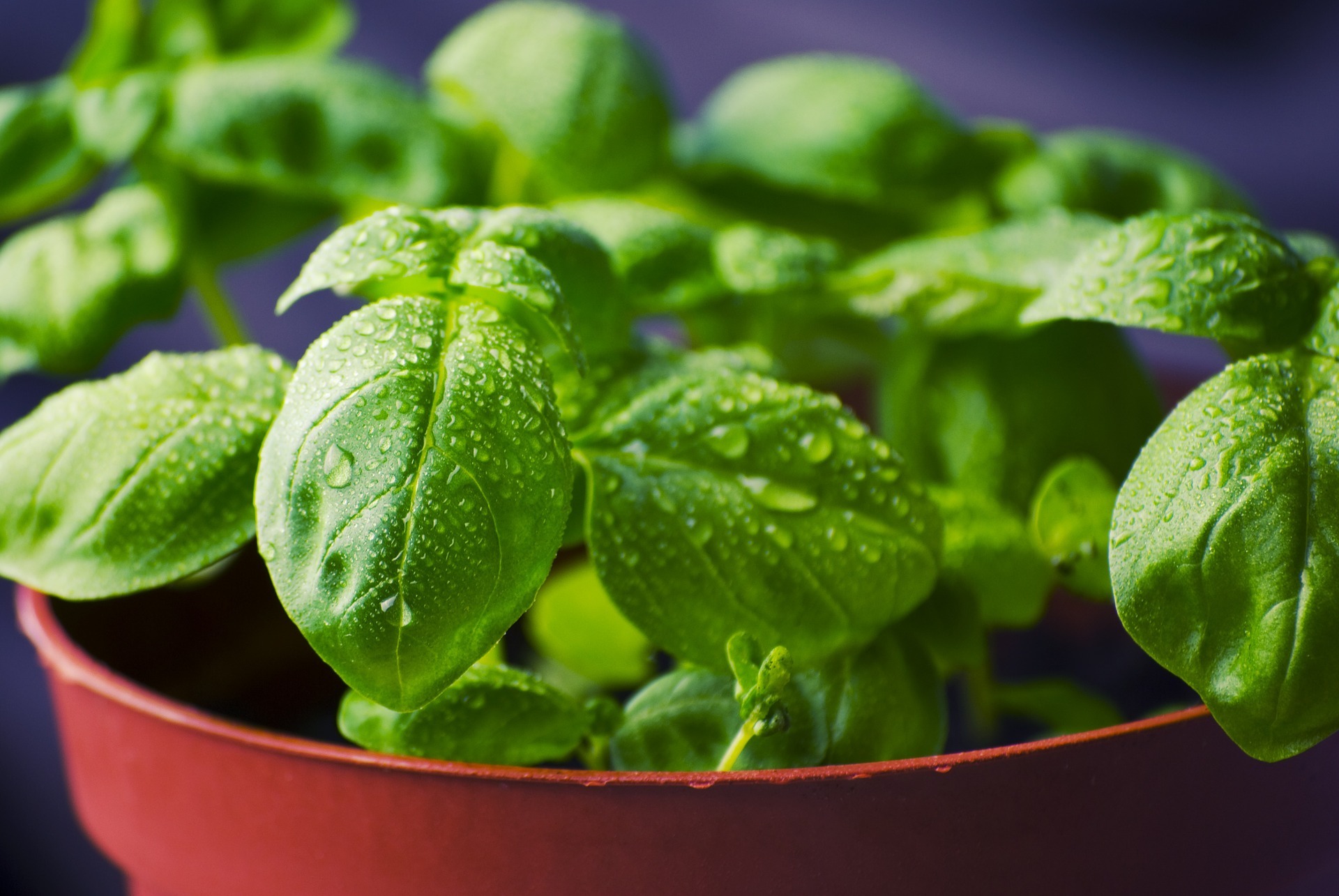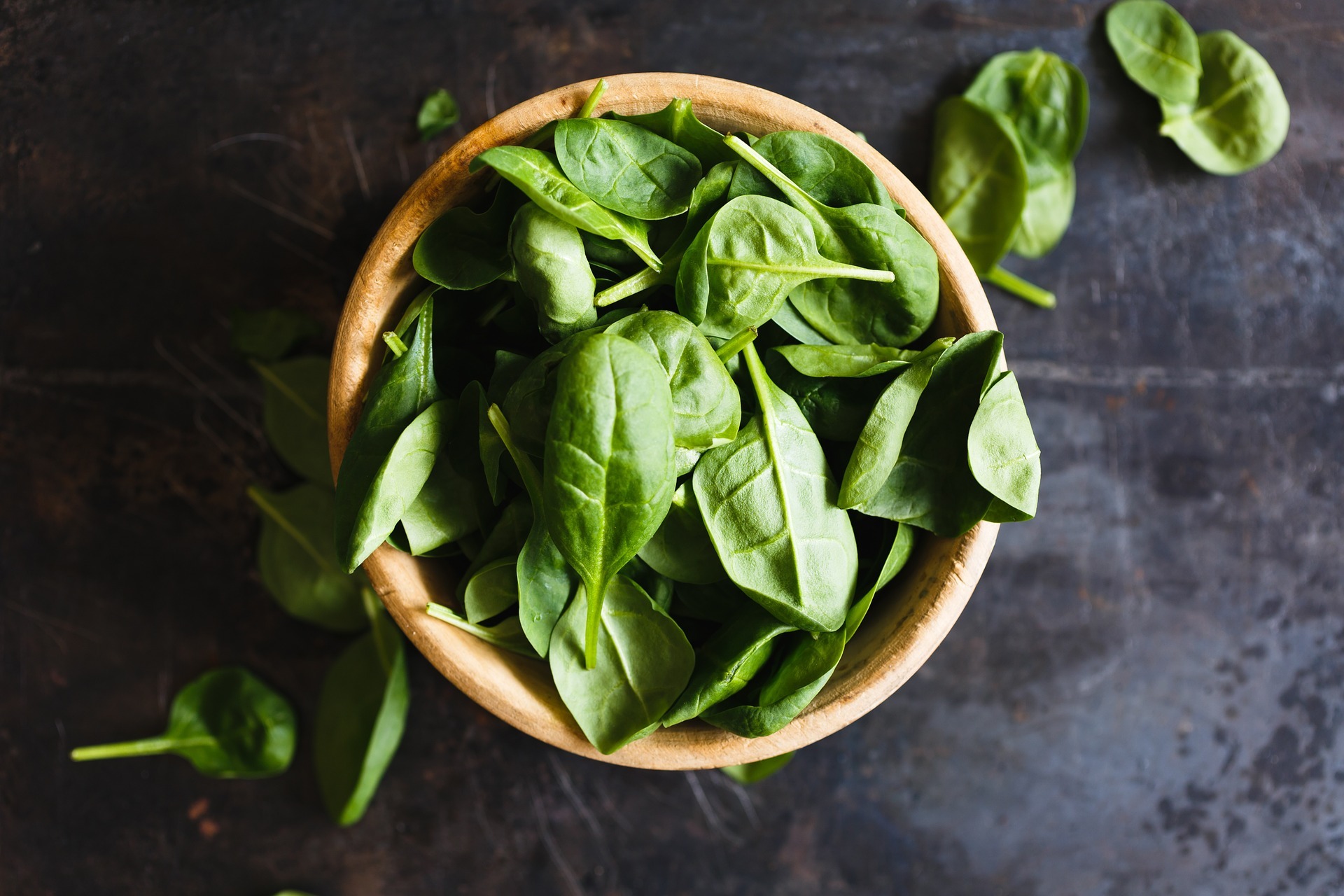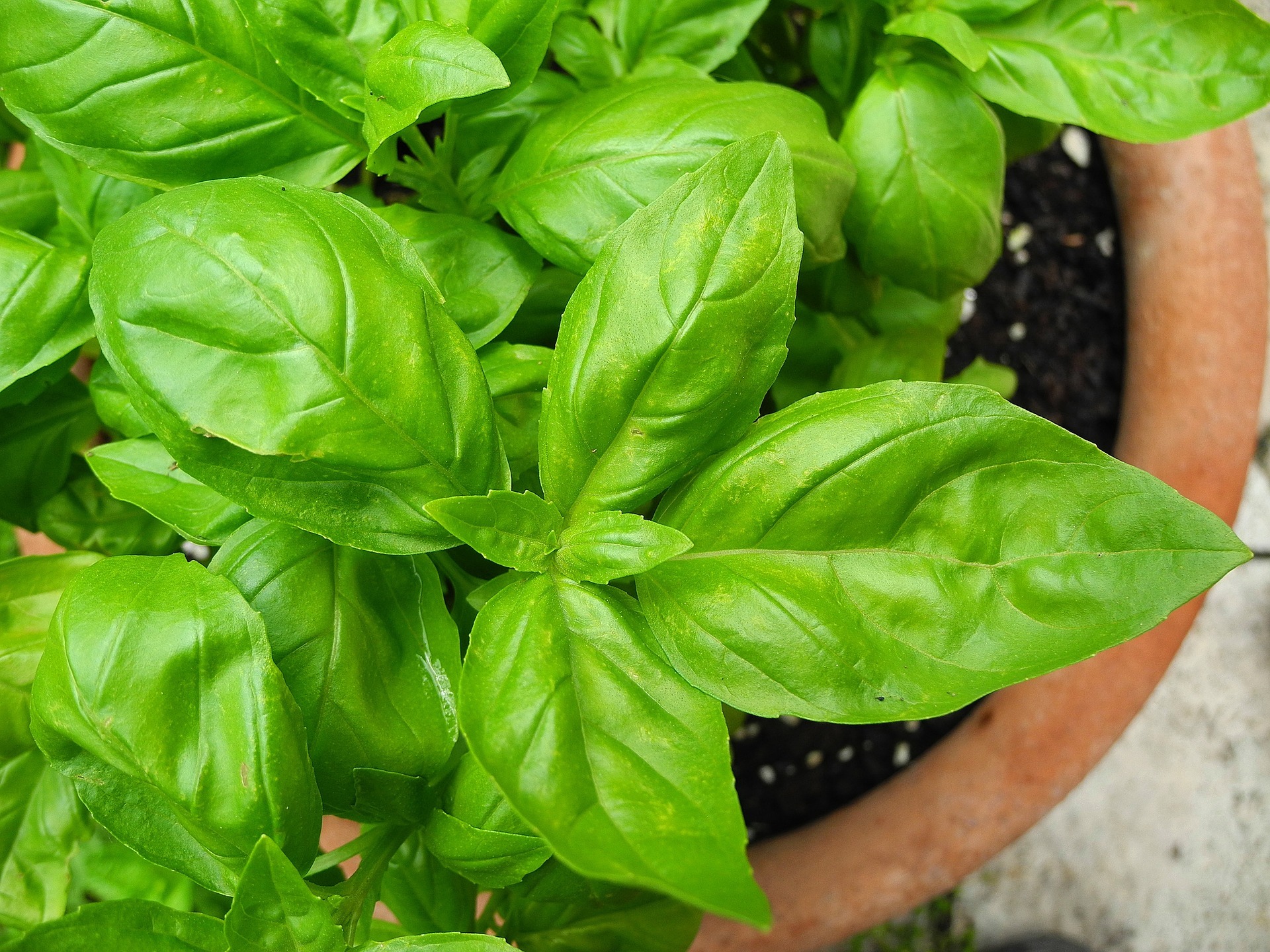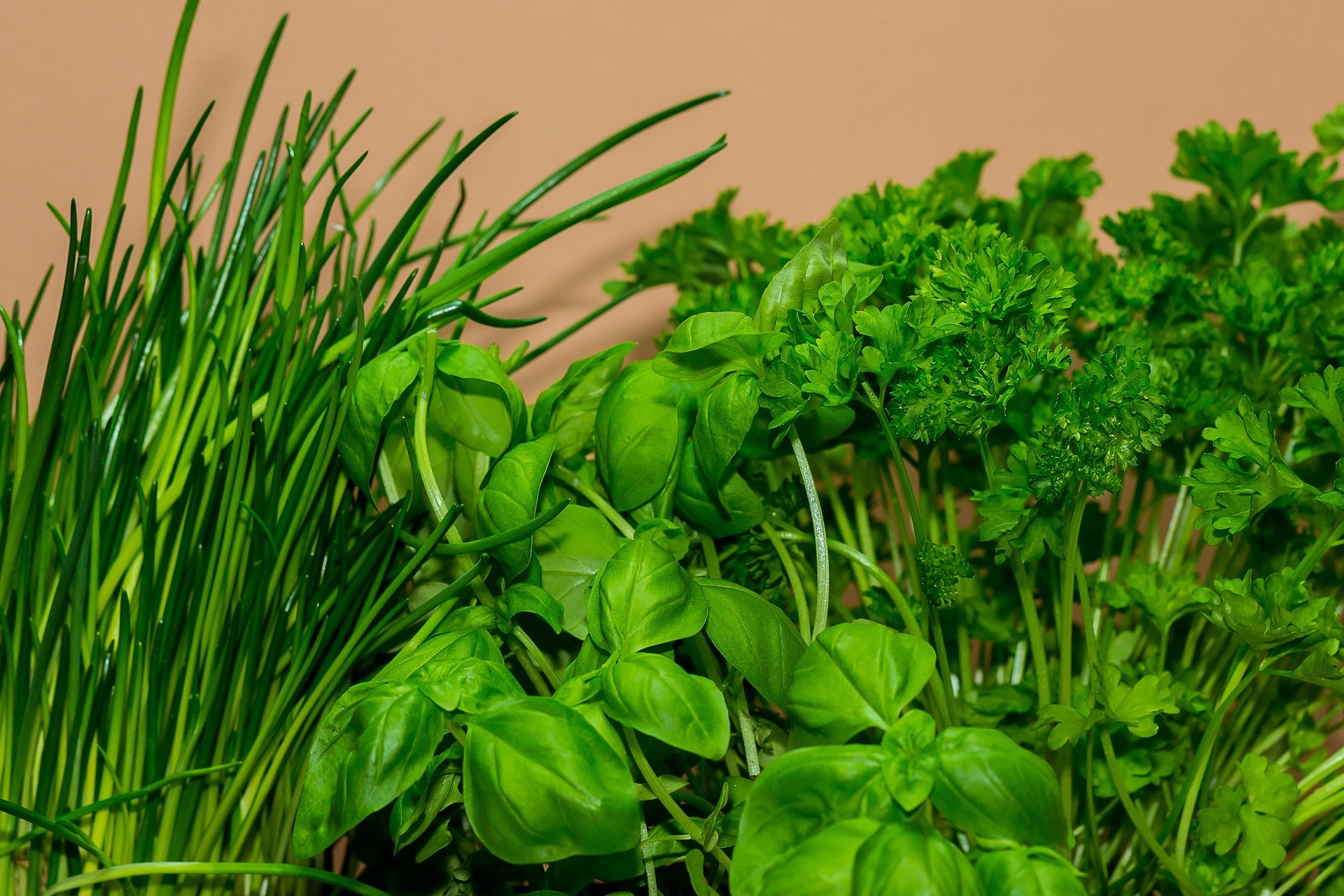Basil is considered one of the world’s most versatile herbs, common in a variety of different cuisines from Italian to Thai. Growing your own basil can be both fun and rewarding as it is a simple plant to grow both indoors and out; plus it often has a large yield of fragrant and tasty basil leaves for your use to make fresh pesto or in any number of different dishes. Unfortunately, basil can produce such a yield that you will probably have more than you can use.

Harvesting and Trimming Basil
The first step in learning how to dry basil is to harvest and trim your basil plants. The absolute best time to harvest your basil plants is right before they flower. This is the peak time for the fragrant essential oils that give basil its aroma and taste. Once the basil plant flowers, the flowers take some of the fragrant oil with them as they grow. Basil flowers appear in a pyramid shape in the middle of a bunch of leaves.
The time of day you harvest your basil leaves can also affect their potency, flavor, and fragrance. Mid-morning is considered the best time to harvest. This should come after the morning dew’s watering but before the sun has had a chance to dry off the leaves. Harvesting at this point will make it as easy to dry your basil as possible.
To harvest the basil, you need to cut the individual basil leaves from the stems. When looking to learn how to dry basil, you will want to practice taking just a small length of stem with each leaf. You only need about an inch or so at most. This makes it easier to tie them together as a bunch to dry them. This is not necessary if you plan to use a food dehydrator to dry your basil leaves.

Previous Steps Before Drying Basil
Before we directly answer the question of how to dry basil leaves, there are a few steps left. Once you have harvested, you need to give the basil leaves a quick rinse in cold water. This will remove any dirt from the leaves. Place the leaves on a dry paper towel and cover that with another dry paper towel, passing it down gently to dry the leaves. You want to be gentle here because any damage to the leaves will expose the fragrance and tasty essential oils, taking away from the flavor of your dried basil.
How to Dry Basil at Home in an Easy Way
When it comes to how to dry basil, there are two widely accepted methods of doing it. The first is the method that people have been using to dry basil for millennia, letting it dry out over a period of weeks in a cool dry place. Modern technology offers another solution to how to dry basil: a food dehydrator. This method is much quicker, but it does require the use of a food dehydrator, which is not an appliance everyone has in the house.
You can also use the oven if you don’t have a dehydrator, though you have to be very careful as you don’t want to actually cook the basil leaves. Our guide to how to dry basil will discuss both these methods, starting with the food dehydrator.

How to Dry Basil in a Food Dehydrator or Oven
If you’re looking to learn how to dry basil in an oven or food dehydrator, begin by placing the basil leaves in an individual layer on a baking sheet if you’re using an oven or on the tray of your food dehydrator. Make sure that the leaves are not touching each other.
If you are using a food dehydrator, follow the instructions for its operation. It should have specific instructions on how to dry herbs. For the oven, set it to its lowest possible temperature. You want a temperature that is below 200°F if possible.
Dried basil leaves should be dry all over with no moisture whatsoever. When pinched, they should crumble easily. In a food dehydrator, this can take up to 24 to 48 hours. Ovens take much less time. Preheat your oven to the lowest temperature possible and bake the leaves for 20 minutes. Turn off the oven but leave the leaves inside the closed oven overnight. By the time you open the oven in the morning, the leaves should be sufficiently dry.
No products found.
How to Dry Basil in the Traditional Method
The traditional method for how to dry basil takes a lot longer, often multiple weeks, but there is less chance of damaging the leaves by cooking them or over-drying them. If you plan to use the traditional method of how dry basil, it is vital that you leave some of the stems of each individual leaf intact. This will be what you use to bunch the leaves together.
The first step in the traditional method for how to dry basil is to bunch the leaves together. Gather the individual leaves into a stack with all of the stands facing the same way. Use a twist tie, twine, or rubber band to tie the stems together, keeping the bunch from falling apart.
Tie the bunch of basil leaves to a length of twine and then place the bunch in a paper bag with the length of twine extending out of the mouth of the bag. Secure the bag’s opening around the twine with a rubber band or more twine. Poke several holes into the sides of the paper bag. Basil can be dried outside of the paper bag, but as it dries, some of the leaves might fall apart. The paper bag will catch those so that they can be stored and used later.
Hang the bag with the basil leaf bunches in a dimly lit but warm and dry room. Leave the bag to dry for up to two weeks, checking occasionally to determine if it is dried completely. As with the food dehydrator or oven method, when the basil crumbles when pinched and is completely dry, without any spots of moisture, it is ready to be stored
Alternate Method of Preserving Basil for Pesto
Dried herbs concentrate the flavor compared to fresh herbs; sometimes as much as quadrupling it. That said, nothing beats fresh basil for pesto. If you are a pesto fan and grow your own basil, there is an alternate method of preserving the fresh basil instead of drying it. This method requires a silicon ice cube tray with small cubes and olive oil.
Prepare the fresh basil leaves as you would for pesto, dicing them into fine pieces. Pack the prepared basil into the silicone ice cube tray, packing as much as you can into each individual cube. Carefully drizzle all of the oil over the cubes filled with your prepared basil. Set this in your freezer and let it freeze completely.
Once your basil olive oil cubes have frozen, you can remove them from the ice cube tray and store them in freezer bags for later use. When you want to make pesto, simply let the cube defrost and use the olive oil and basil as you would in any other pesto. This method can be used to preserve all sorts of different herbs in addition to basil.
How to Proper Store Basil at Home
While dried herbs have a greater flavor punch than fresh herbs, they lose it much faster, too. No matter how you dehydrate basil, make sure to store it in a way that will allow it to keep its flavor for the longest period of time. The two biggest killers of flavor are light and air.
To control light, store your dried basil in a dark pantry or cupboard where light cannot penetrate. It is best that this be a cupboard or pantry that is not used frequently, to keep your basil from even getting a hint of light. Crumbling the basil and storing it in a non-see-through container can help keep lights from ruining your dried basil.
When looking for a container, also look for one that is airtight. Crumble the leaves into this container, removing any stems or flowers, as they will not have the appropriate flavor you’re looking for. To further process the dried basil leaves, pulverize them in a spice grinder to make a fine powder of them.
No products found.
How to Use Dried Basil in Your Fresh Basil Recipes
As stated above, dried basil has a stronger flavor than fresh basil. That said, it can still be substituted for fresh basil and recipes that ask for it fresh.
Generally, only use a quarter to a third of the amounts of basil asked for in the recipe if you’re using dried basil in place of fresh basil.

Final Thoughts
No matter how you plan to use the excess basil leaves from your basil plants, we hope that our tips on how to dry basil allow you to preserve your overabundant basil harvest and especially preserve that wonderful basil taste. We know that your basil dishes will thank you.

Katy Willis is a writer, lifelong homesteader, and master herbalist, master gardener, and canine nutritionist. Katy is a preparedness expert and modern homesteader practicing everyday preparedness, sustainability, and a holistic lifestyle.
She knows how important it is to be prepared for whatever life throws at you, because you just never know what's coming. And preparedness helps you give your family the best chance to thrive in any situation.
Katy is passionate about living naturally, growing food, keeping livestock, foraging, and making and using herbal remedies. Katy is an experienced herbalist and a member of the CMA (Complementary Medical Association).
Her preparedness skills go beyond just being "ready", she's ready to survive the initial disaster, and thrive afterward, too. She grows 100% organic food on roughly 15 acres and raises goats, chickens, and ducks. She also lovingly tends her orchard, where she grows many different fruit trees. And, because she likes to know exactly what she's feeding her family, she's a seasoned from-scratch cook and gluten-free baker.
Katy teaches foraging and environmental education classes, too, including self-sufficient living, modern homesteading, seed saving, and organic vegetable gardening.
Katy helps others learn forgotten skills, including basic survival skills and self-reliance.
She's been published on sites such as MSN, Angi, Home Advisor, Family Handyman, Wealth of Geeks, Readers Digest, and more.
Last update on 2024-07-27 at 03:25 / Affiliate links / Images from Amazon Product Advertising API
